The following morning I got up around 7 am, so I first had my breakfast, checked my email and then walked to the coach terminal in Merida. I had already had the ticket to the next destination and the coach to Campeche left around 9 am while the drive took around three hours.
Campeche is a city on the coast of the Gulf of Mexico and it is the capital of the federal Mexican state of the same name. By the way, Mexico has 31 federal states, plus Mexico City as the capital.
Campeche was founded by the Spanish in 1540 above the remains of a Mayan city, but practically nothing has survived of that old city either. The main reason why I came here anyway was that with its historic centre Campeche is inscribed on the UNESCO’s World Heritage List.
Still, to start with, when I got here I realised I did not have enough money on me to buy a coach ticket for the continuation of my journey, so I first had to go to a nearby bank where I waited for 40 minutes! I don’t remember any longer why I had to go to the bank, but the fact is that I did go there and had to wait for long. Luckily, I remembered that I could comfort myself by saying that this was a good practice of patience. In any case, the ticket was eventually bought and I could move on.
Since the coach terminal was a little farther away from the centre, this time I had to take a taxi in order to get to a hostel recommended by Elsie, the owner of the guest-house in Merida. And it was really good that I remembered to ask her, for there were absolutely no information at the coach terminal in Campeche and I would be in a pickle since I knew of not a single place to stay in this town. Already at the beginning of these stories about my travelling here I said that I had left home without a complete guidebook to Mexico; in other words, without any serious, concrete and practical information. The only thing I had with me were photocopies of a few pages from a guidebook concerning the sites I was visiting and that was all. Also, I did not use the internet in order to find appropriate accommodation, so I had to improvise (at the time I was not skilful enough and it also seems that there was not as much information on the topic as today). In all of this, my advantage was that I speak Spanish, so at least I could ask around.
The hostel that was recommended to me was in an excellent spot, only a couple of dozen metres from the central square in the historic centre and they offered to me a single room, but with a shared bathroom. I hesitated a little, but in the end I agreed, for I did not have much of a choice – I did not know where else to find another accommodation and I did not feel like going on a search in the heat carrying a large backpack.
Another important aspect of this journey was that I had a very limited budget. That meant that I had to opt for cheaper accommodation. I could not save on entrance and transportation tickets, including a taxi here and there, but I could save on food and accommodation. As for the food, I usually ate at smaller restaurants and places that are called the comedor. This may mean “dining-room,” as well as “eatery” – something between a small restaurant and a fast-food joint. As for the accommodation, since I travelled alone, my main criterion was to take a single room with a private bath no matter how modest they could be. As it would turn out by the end of the journey that lasted for a month, I did succeed in this with only one exception and that was in Campeche.
So, apart from not having my own bathroom linked to the room, the room itself was quite “challenging” – although very pretty, with a vintage appearance since the hostel was in one of the houses in the very historic centre, the room was in the middle of the house and did not have a single window! Still, it was not too bad in the end, but for the time being I left my things in the room and went out to a nearby tourist information office in order to get a map and see where I could buy some water.
Since the hotel was located in such a good spot, I got immediately to the main square with a park called the Independence Square (Plaza de la Independencia).
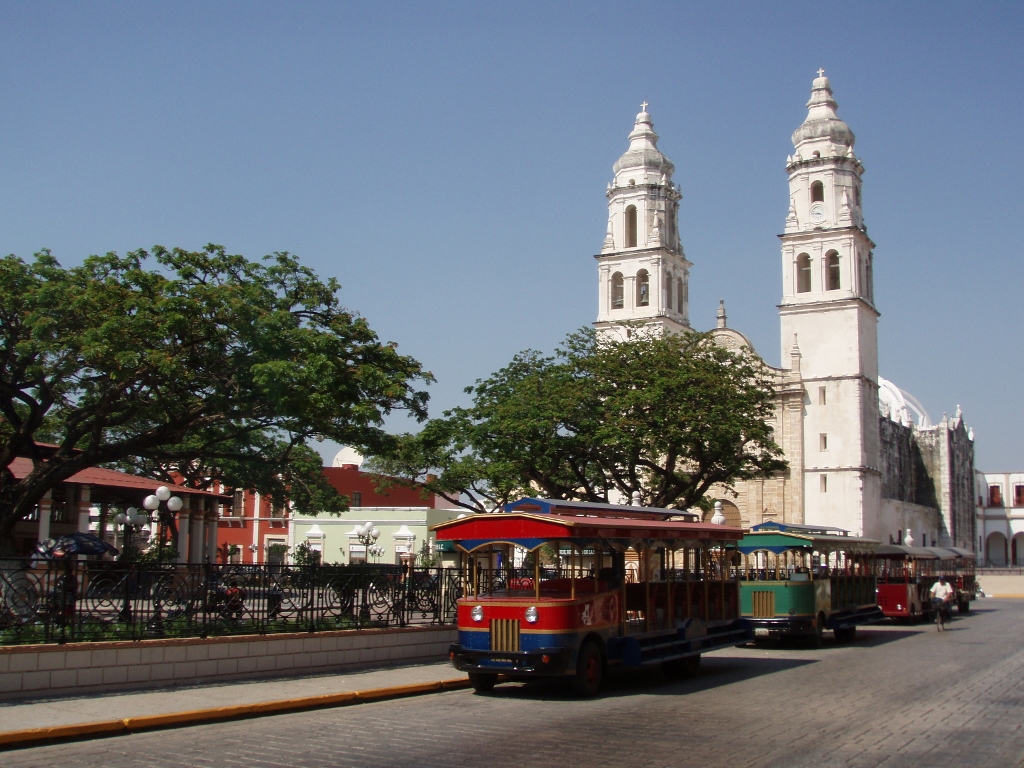 Campeche
Campeche
On the side of the street on which I was when admiring the main square and the Cathedral, there is a wonderful arcade that was creating a good shade, but I still felt uncomfortably hot, so I bought the water and went back to the hostel, where I checked my email.
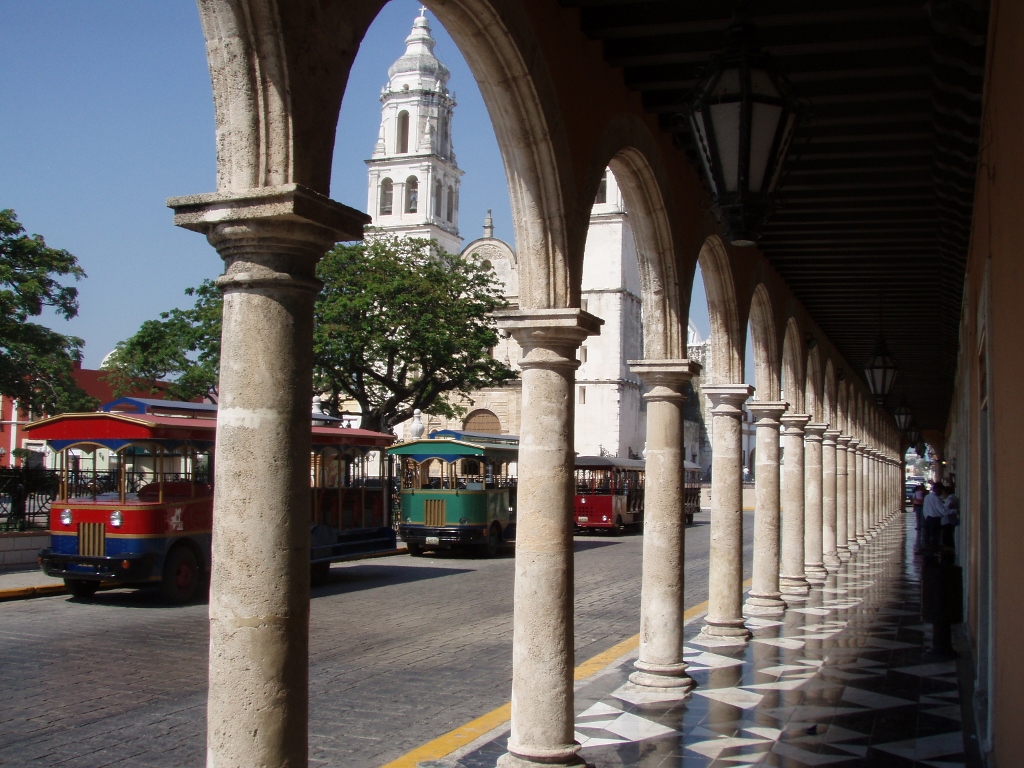 Arcade at the Independence Square
Arcade at the Independence Square
While corresponding with Velislav, my friend from New York, he reminded me that I should transfer my photos to CDs. (Yes, yes... It does seem I did this journey a long time ago.) I regularly kept in touch with him and he was like my Guardian Angel, following in detail my travel which meant a great deal to me. I generally don’t have a problem with self-confidence, but this did create an additional feeling of safety. The reason for transferring the photos was that I had several memory cards for the camera, but they all had a relatively small capacity, while I thought it would be silly to keep buying new memory cards. And so I gave myself a “task” for the afternoon in Campeche and that was to find a place where I could make that transfer to CDs. Still, I also thought that this search for the place where I would be able to do it should fit into my walk around the historic centre of Campeche.
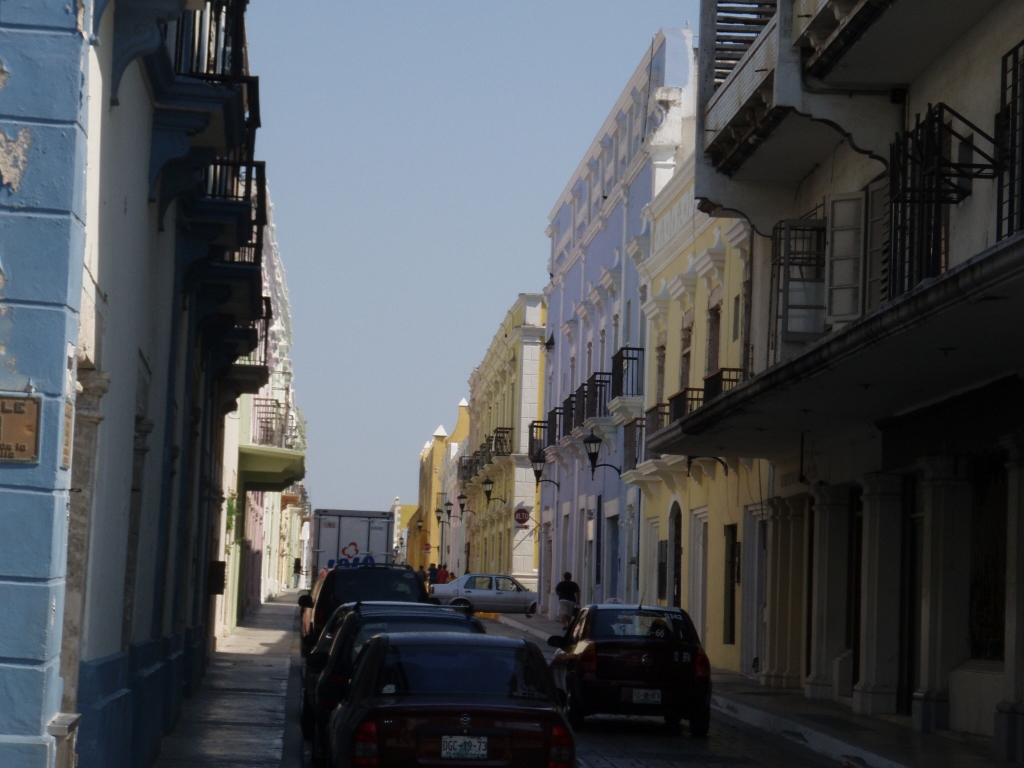 Campeche
Campeche
Campeche, or more accurately its historic centre, is inscribed in the UNESCO’s World Heritage List on account of the fortress that exists here and that represents one of the better examples of the Spanish military architecture in colonies. Namely, Campeche is located on the coast of the Gulf of Mexico and at the time of the Spanish colonial rule here it was the most important port on the Yucatan Peninsula. Because of that, in the past, the city was often attacked by British, French and Dutch pirates who not only attacked the ships sailing by, but often attacked the city, too. Thus, in 1663, there was a real massacre of the residents of Campeche. In the end, the Spanish were fed up with this situation and they built up the fortress. The hexagonal system of external ramparts and fortifications surrounds in fact the historic centre and it’s significant enough to deserve to be in the List. On the other hand, the old part of the city with streets at right angles and exceptionally pretty houses all painted in vivid colours is truly, truly beautiful.
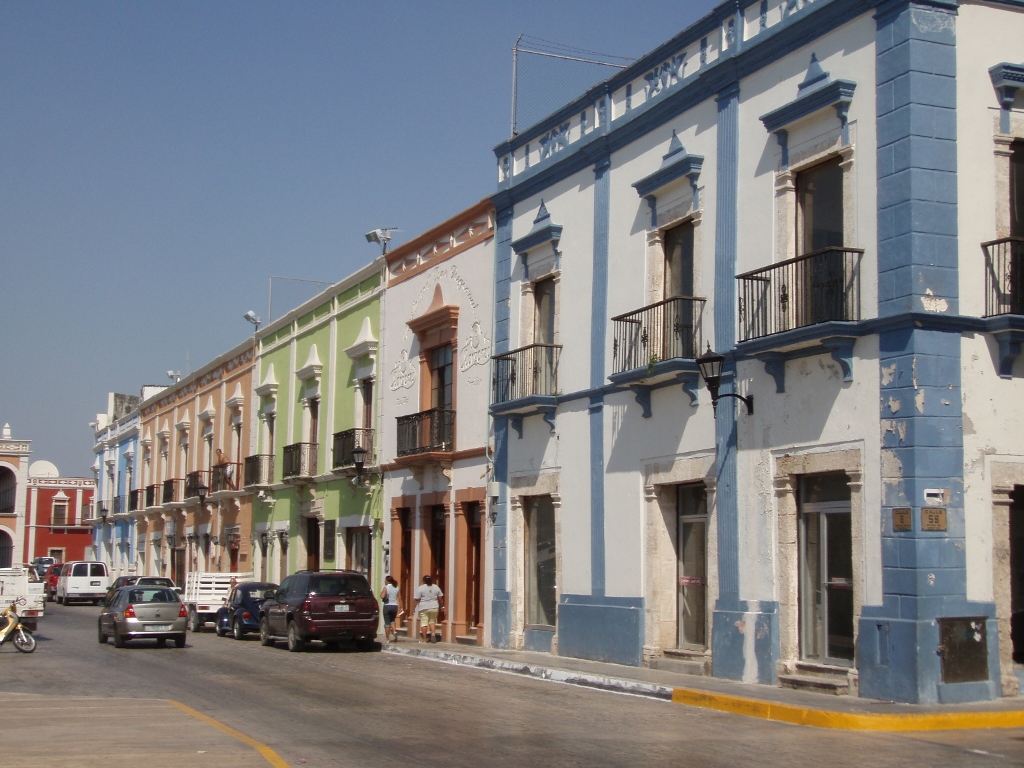 Campeche
Campeche
Strolling around I came to the Sea Gate (Puerta de Mar). In this part of the town facing the sea, the ramparts have mostly disappeared until the present times, but some parts are still there, including this section where one of the two most important gates of the old city is located. On the opposite side of the city is the Land Gate (Puerta de Tierra), but I went there later.
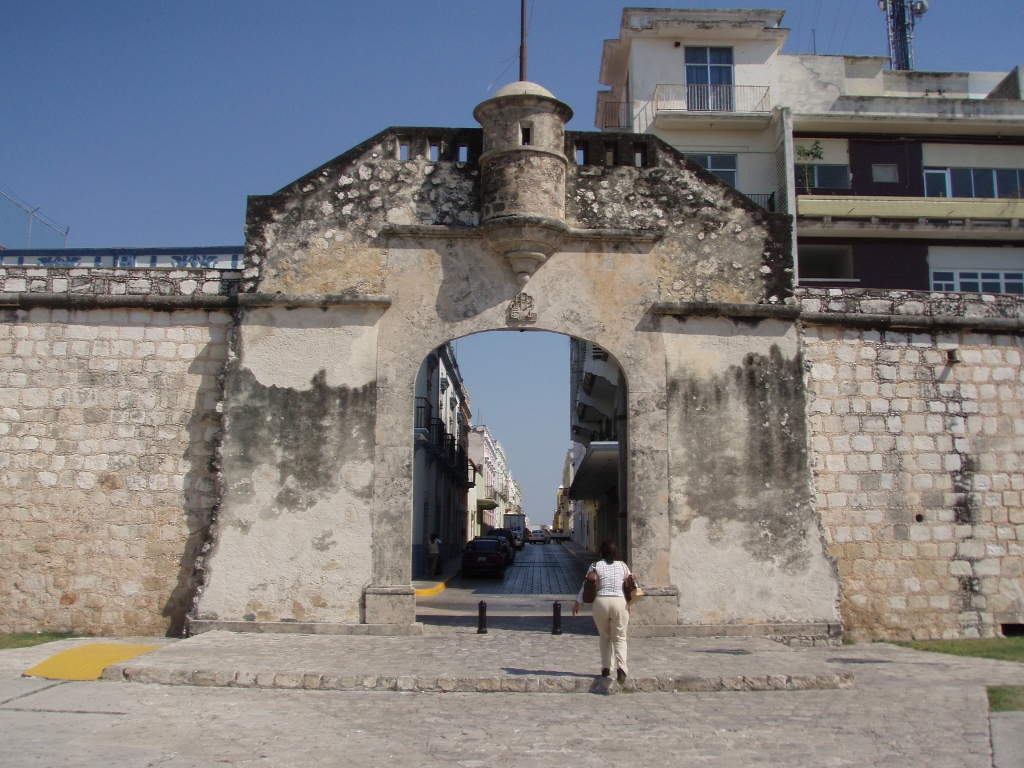 Campeche – the Sea Gate
Campeche – the Sea Gate
In addition to the Sea Gate and a smaller section of the wall, there is also a very well preserved Bastion de la Soledad (Baluarte de la Soledad) here. Nowadays it houses a museum, but I did not go there.
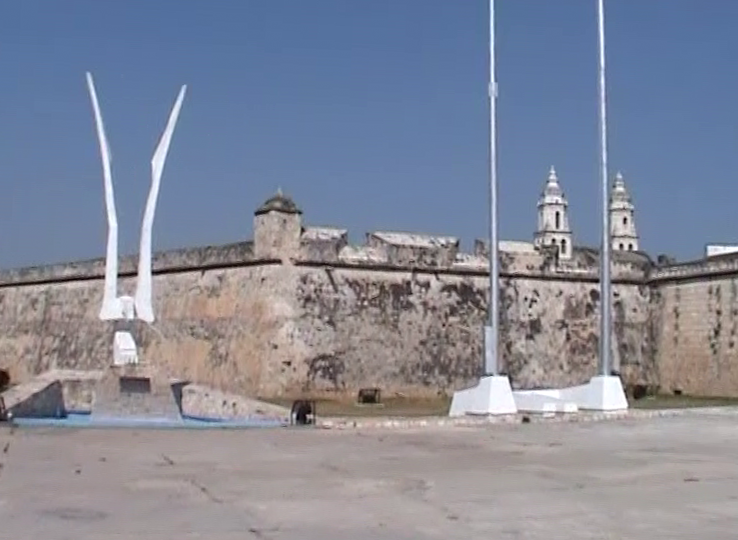 Bastion de la Soledad and the bell towers of the Cathedral
Bastion de la Soledad and the bell towers of the Cathedral
For the time being I went to the shore of the Gulf of Mexico. Although in a contemporary setting, along the promenade by the sea there are some ancient canons that complement the historical aspect of Campeche.
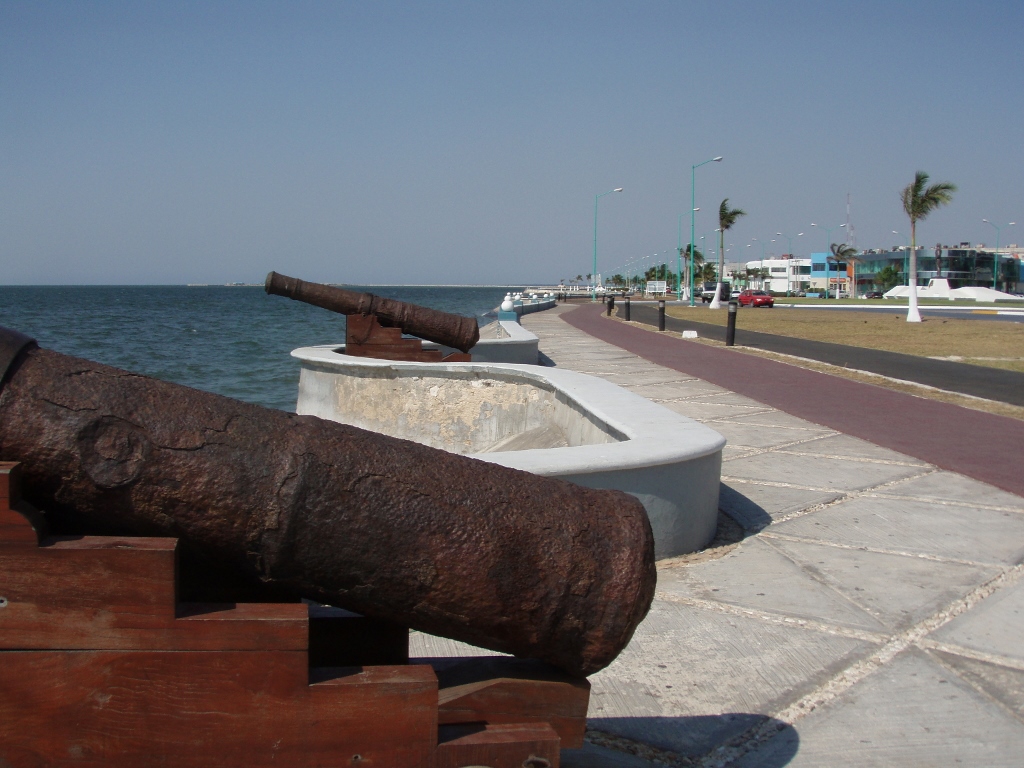 Ancient canons on the shore of the Gulf of Mexico
Ancient canons on the shore of the Gulf of Mexico
When I turned to the other side, I could see parts of the contemporary city, as well as the continuation of the promenade.
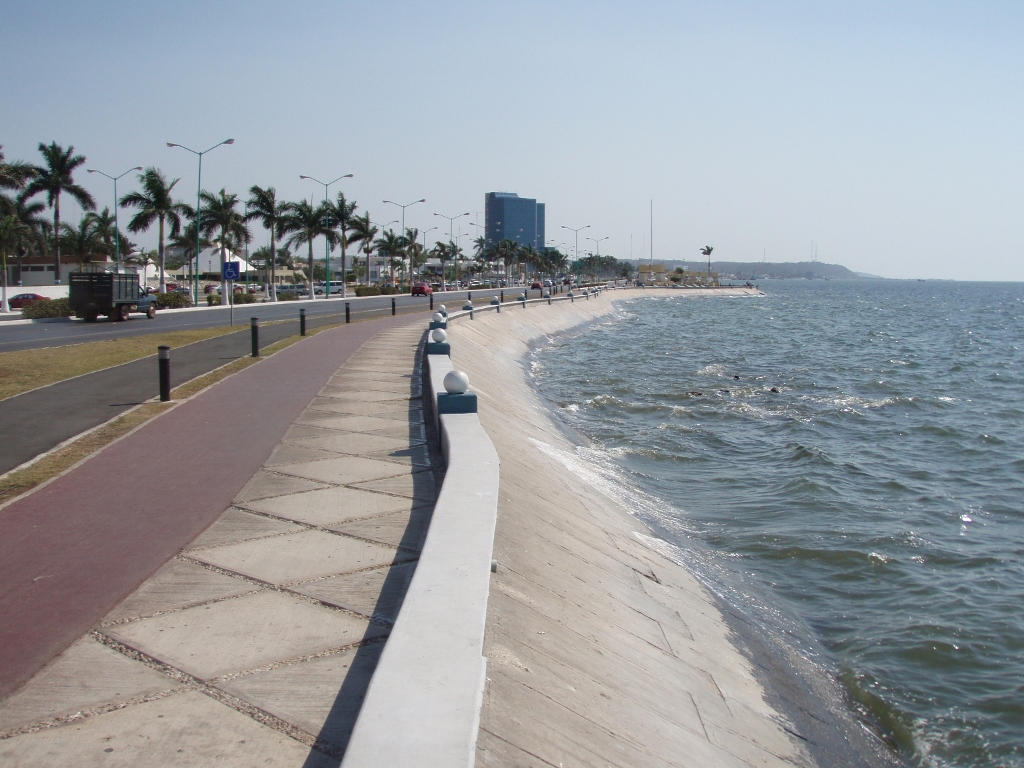 Shore of the Gulf of Mexico in Campeche
Shore of the Gulf of Mexico in Campeche
Watching the entire spatial distribution from this point, I found it interesting that the fortress was not situated on the very shore. On the other hand, while I watched the waters of the Gulf of Mexico it was not difficult to conclude that it did not look spectacular, but then again it is not known for some beautiful beaches with famous summer resorts. What it has is oil.
As it may be noticed in the photos above, apart from me there was practically nobody else on the promenade. The reason for that was that it was still hot and so after a short time spent on the shore, I hurried back to the safe shade that existed in the narrow streets of the historic centre of Campeche.
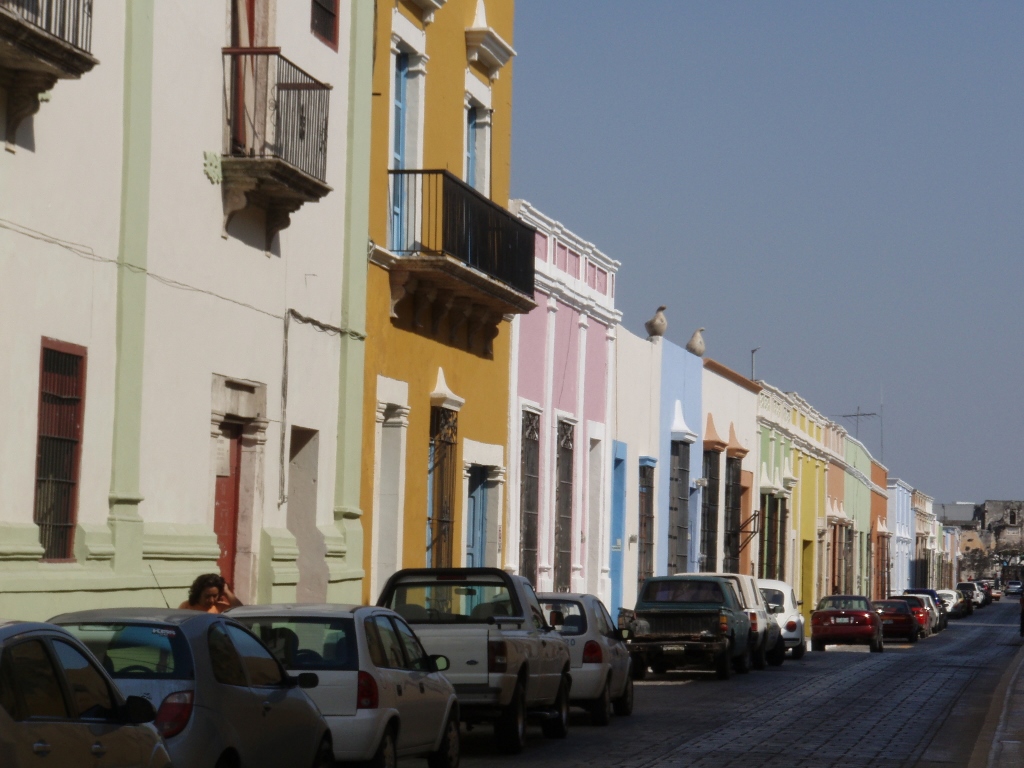 Picturesque houses of Campeche may be seen well from shade too
Picturesque houses of Campeche may be seen well from shade too
When I returned to the part of the city within the ramparts, I continued with my walk along the 59th Street and soon I reached the Church of San Roque (Iglesia de San Roque). By the way, in the past the streets used to be named after some notions and so this church used to be on the corner of Colon, meaning Columbus, and America streets. Over time, these names were changed and turned into numbers, so the church is located at the corner of the 12th and the 59th streets.
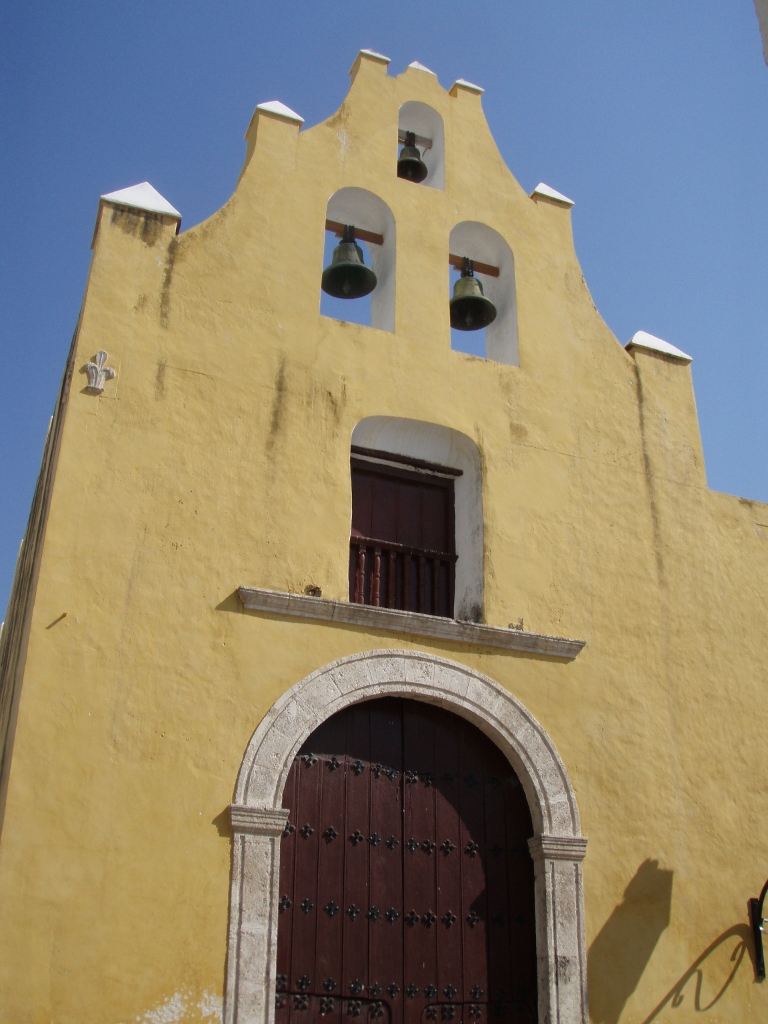 Church of San Roque
Church of San Roque
In the past, a monastery used to be beside the church, but nowadays there is a cultural centre there called El Claustro.
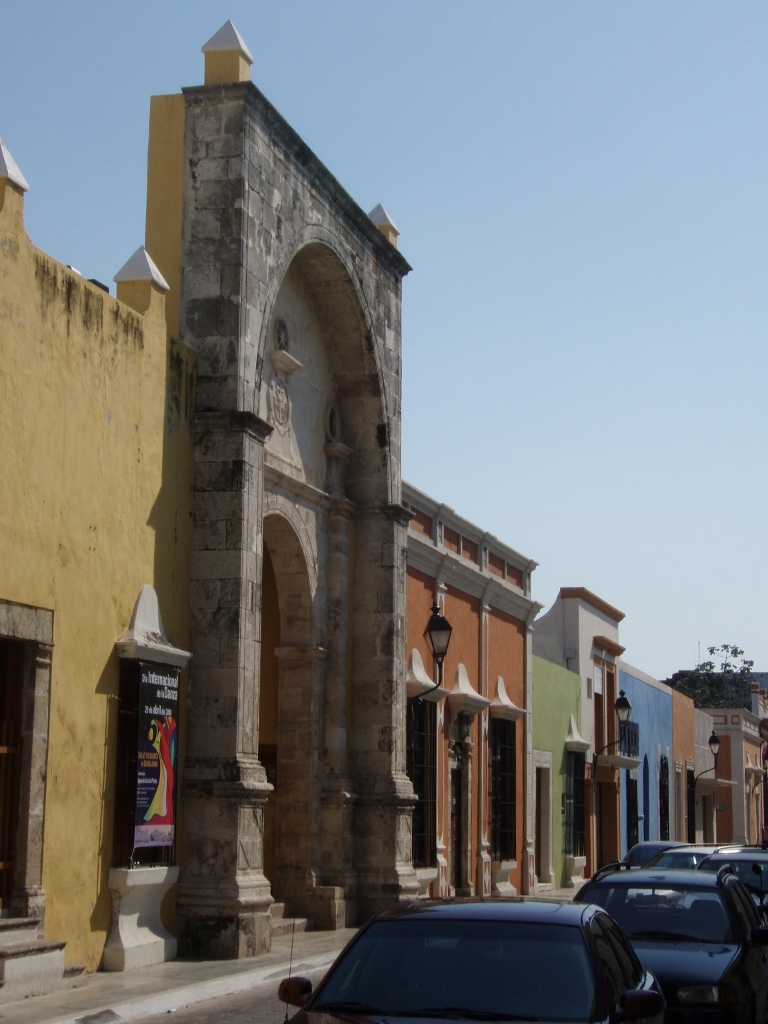 Stone front facade where the entrance into the cultural centre El Claustro is
Stone front facade where the entrance into the cultural centre El Claustro is
Since almost everything seemed to be closed during my sightseeing walk (probably on account of a siesta), I just continued along the 59th street and there in addition to more pretty houses I could also see at the end of the street the exit from the historic centre in the shape of the Land Gate (Puerta de Tierra) which, as its name suggests, leads towards the dry land.
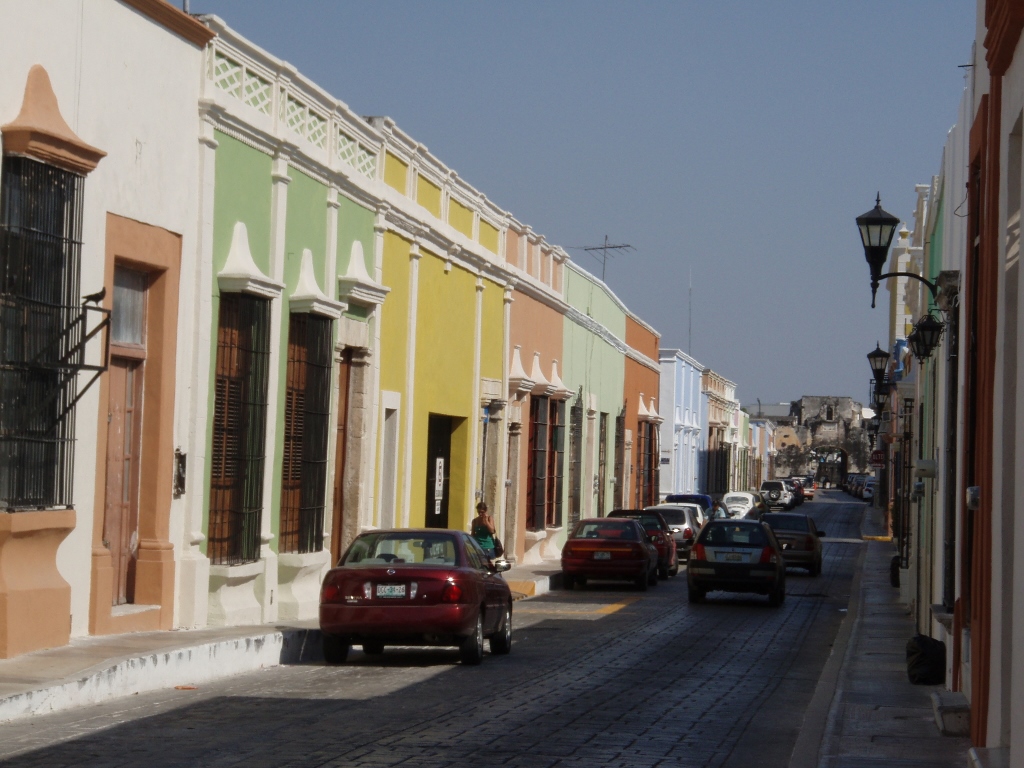 59th street and the Land Gate at its end
59th street and the Land Gate at its end
A little farther away I got to the King’s Lieutenant’s House (Casa de Teniente del Rey). This is the former residence of the military representative of the King of Spain on Yucatan built in the 18th century. Today, there are some offices here, but during the working hours it is allowed to enter the courtyard.
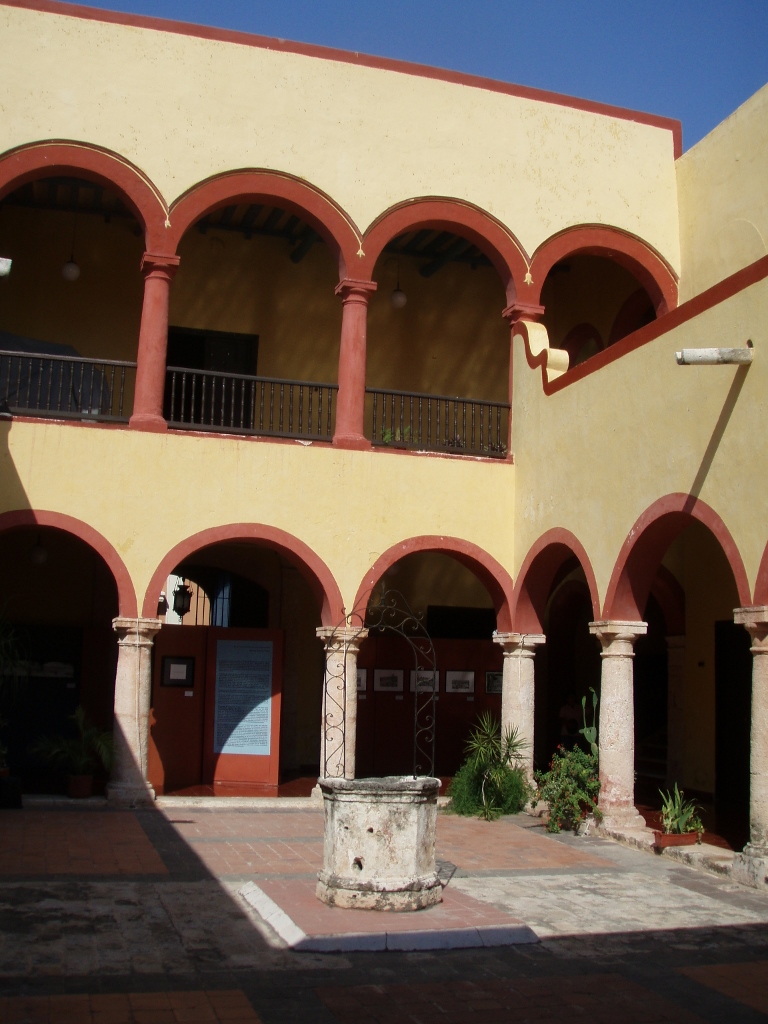 Detail from the courtyard of the King’s Lieutenant’s House
Detail from the courtyard of the King’s Lieutenant’s House
Although by this point I was quite close to the Land Gate, I did not go there, but rather continued visiting some interesting buildings in the historic centre. In fact, I was basically looking for a place where I could transfer my photographs from the memory cards to CDs. Let me explain this a little. In 2008, I was using several cards for my photo-camera that all had a relatively small capacity, since my logic was that if one of the cards “died out” it would be less of a damage than if I kept all the photographs on a relatively huge memory card. But, this also meant that from time to time I should transfer the photos onto something (at the time CDs seemed to be the best option) in order for the cards to be reused. While I was searching for a place in the old part of Campeche where I could do that, I also came across some shops that were selling new memory cards, but with my limited budget this was expensive and impractical in the long run. Then I came across a couple of places where they would burn the photos onto CDs, but they did not have a card reader. All in all, apart from wasting quite a lot of time on this, in the end I had to leave the enclosure that the old part of Campeche is in order to follow the advice of a guy from one shop and buy a universal card reader in the new part of the city. As it turned out, this was one of the best buys in my life since I’ve been using this card reader to this very day. Later in the afternoon I went with my card reader to one of the internet-cafés where I finally accomplished my task and in the meantime I could continue with my sightseeing significantly more relaxed.
Thus I got to the Ex-Temple of Saint Joseph (Ex-Templo de San José). The church was built by the Jesuits around the middle of the 18th century, but in 2008 it served as a cultural centre (I don’t know if it still has this function). One of its features is the front facade that is richly decorated in blue and yellow ceramic tiles. In addition, on the top of the tower on the right-hand side, it is possible to see the first lighthouse in Campeche built in 1864.
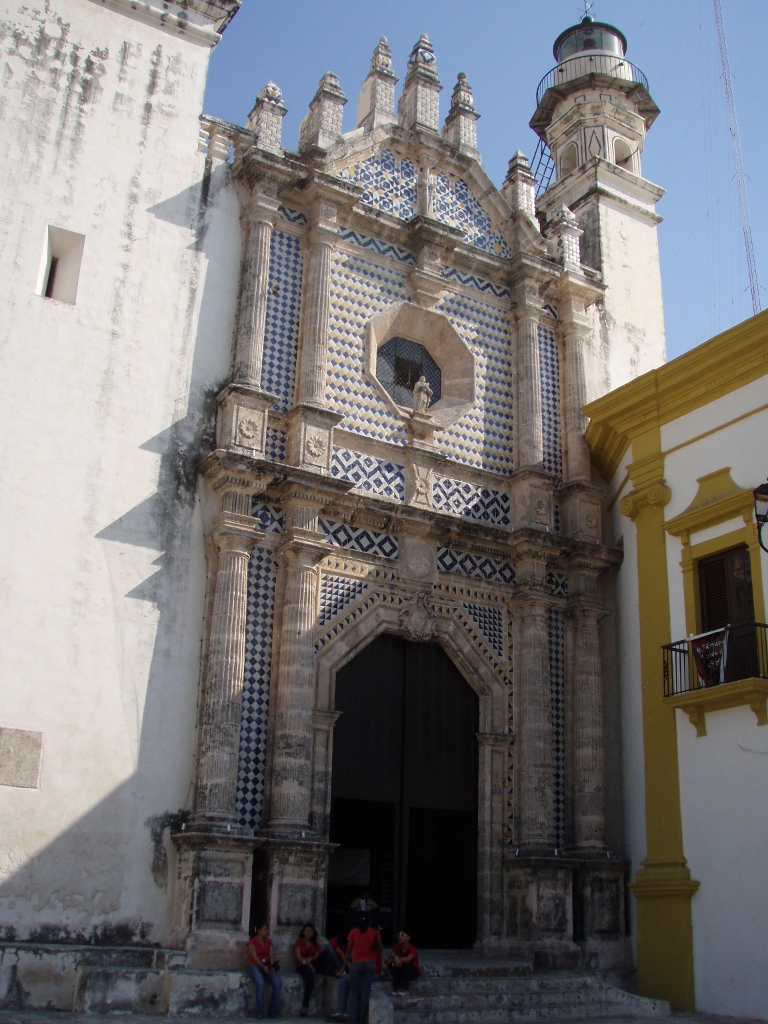 Front facade of the Ex-Temple of Saint Joseph
Front facade of the Ex-Temple of Saint Joseph
I found the lateral side of the church also interesting, although it was quite different in comparison to the front one.
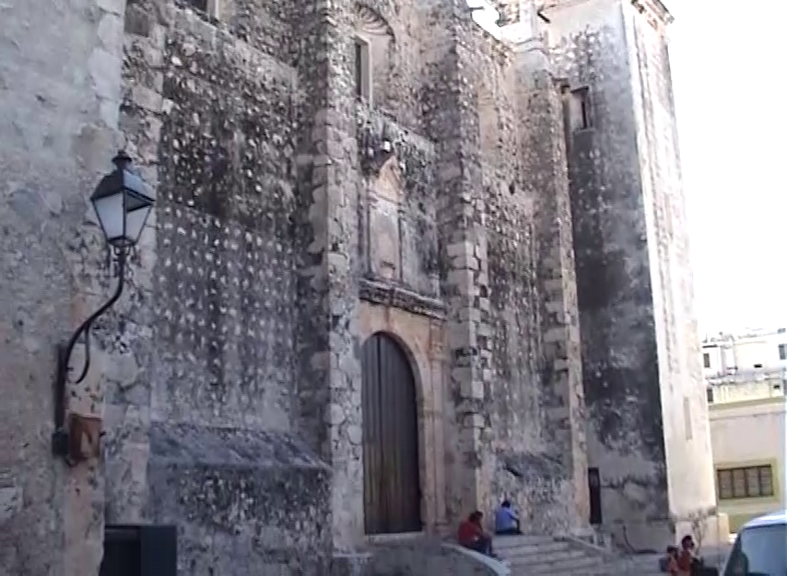 Lateral facade of the Ex-Temple of Saint Joseph
Lateral facade of the Ex-Temple of Saint Joseph
It is obvious that at this point I was very much relaxed, maybe even idle, since looking at the lateral wall of this church I also paid attention to the way it had been built. The wall was made using large pieces of stone of an irregular shape, while in between the builders fitted smaller stones. In the end, all of this was bound by mortar and brought to a state in which the wall is almost perfectly flat and ready to be plastered and painted. I presume that the builders used the same technique for the rest of the church and perhaps even for the surrounding houses.
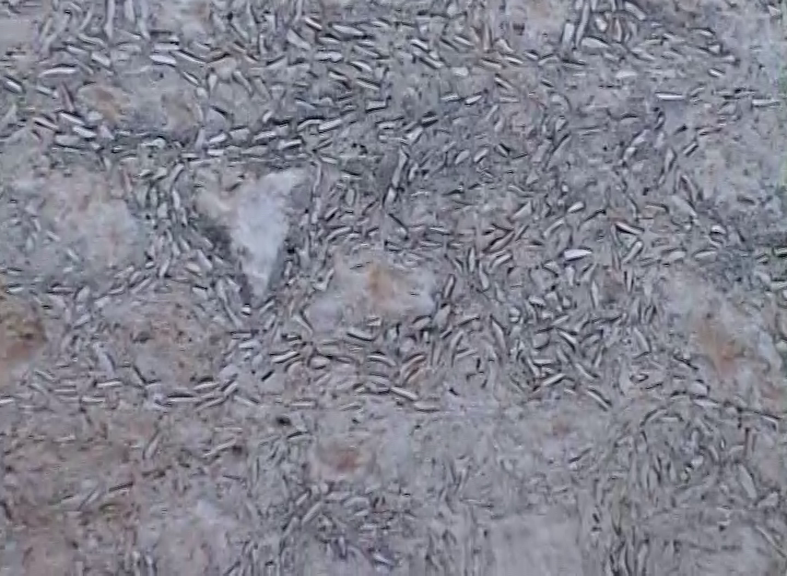 Detail of the lateral wall of the Ex-Temple of Saint Joseph
Detail of the lateral wall of the Ex-Temple of Saint Joseph
Then I headed for the east side of the city and there I passed by yet another church. This was the Church of the Sweet Name of Jesus (Iglesia Del Dulce Nombre de Jesús) or the Church of Jesus (Iglesia de Jesús) for short. In the 1663 attack by pirates, the church was destroyed quite a lot, but by the end of that century it was restored.
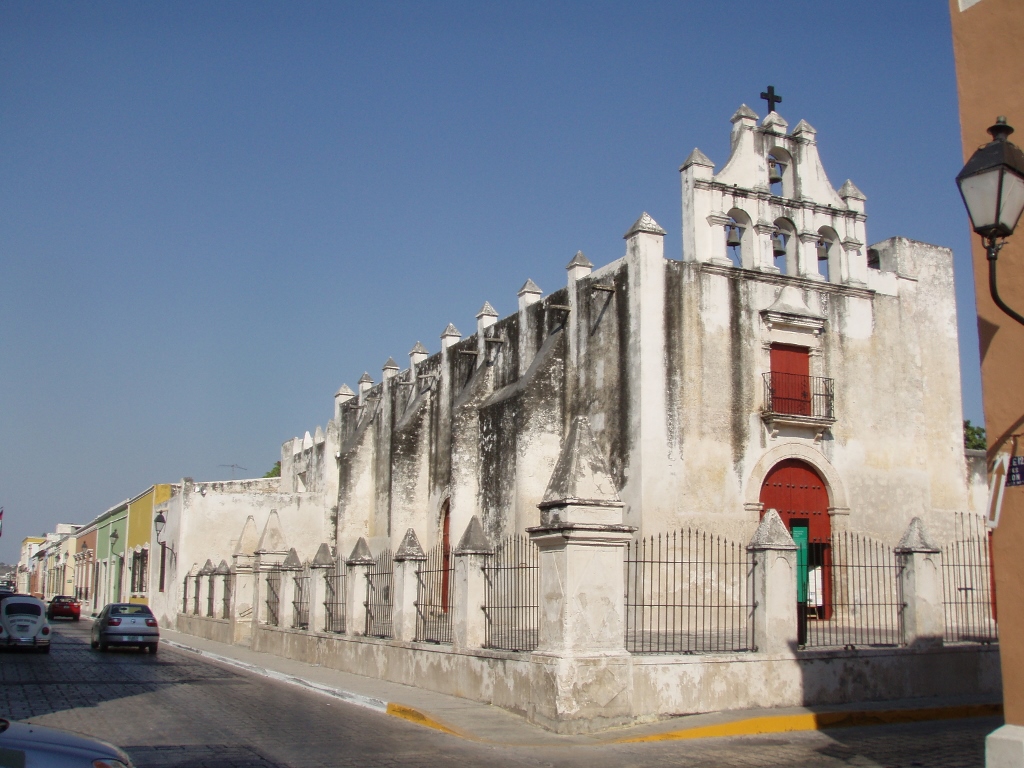 Church of Jesus
Church of Jesus
Soon I got to the Mansion Carvajal (Mansión Carvajal). This spacious mansion was built in the Spanish-Moorish style at the beginning of the 20th century and it used to belong to one of the wealthiest plantation owners on Yucatan at the time whom it was named after. Nowadays, it houses some governmental offices. From the front side I could not enter, but through a cast-iron gate I could see some details.
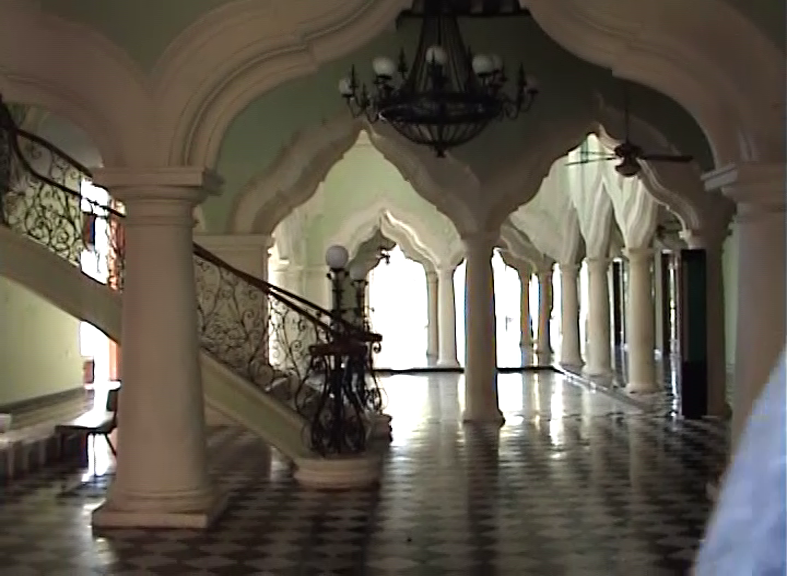 Mansion Carvajal
Mansion Carvajal
However, here my resourcefulness got its full expression and so I circled around the block and from a yard with a parking lot I approached the mansion from the back side.
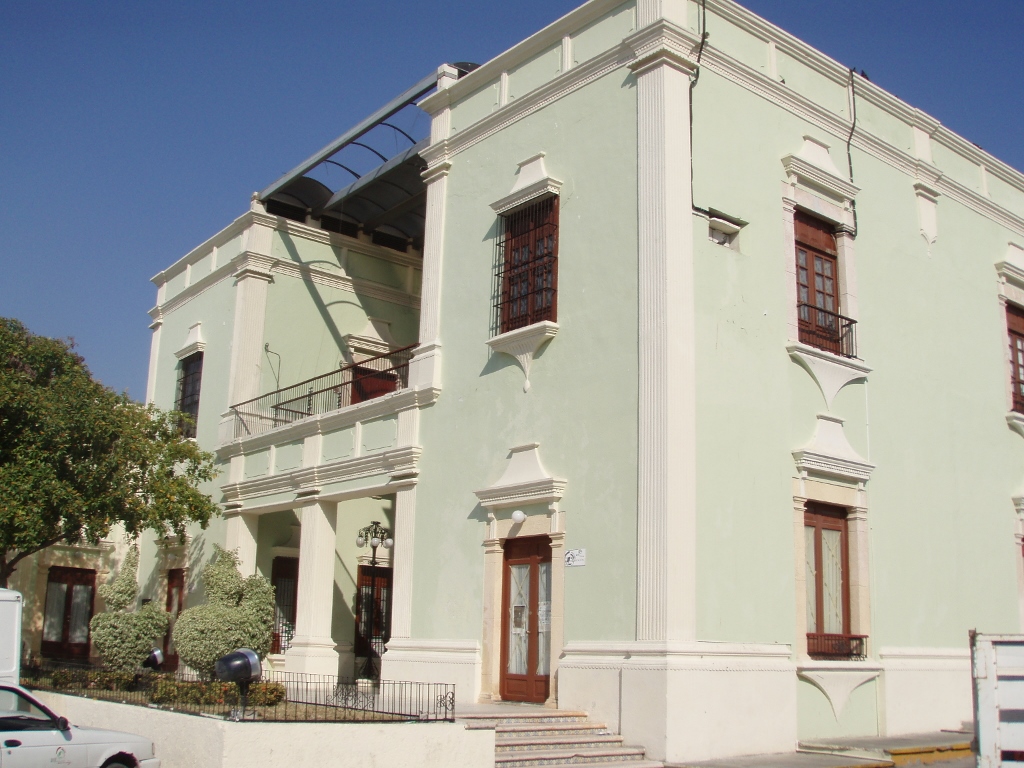 Mansion Carvajal
Mansion Carvajal
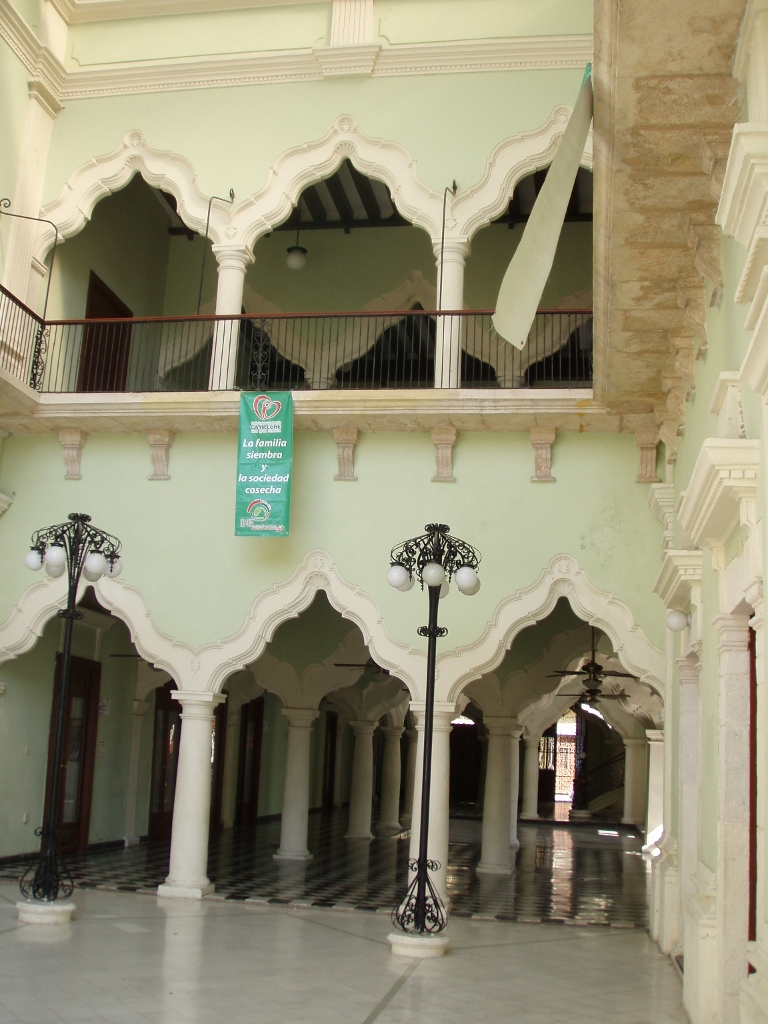 Mansion Carvajal
Mansion Carvajal
Since I walked around so much, I went again to the exterior side of the fortress from where I had a nice view at the ramparts and the towers of the Cathedral in Campeche.
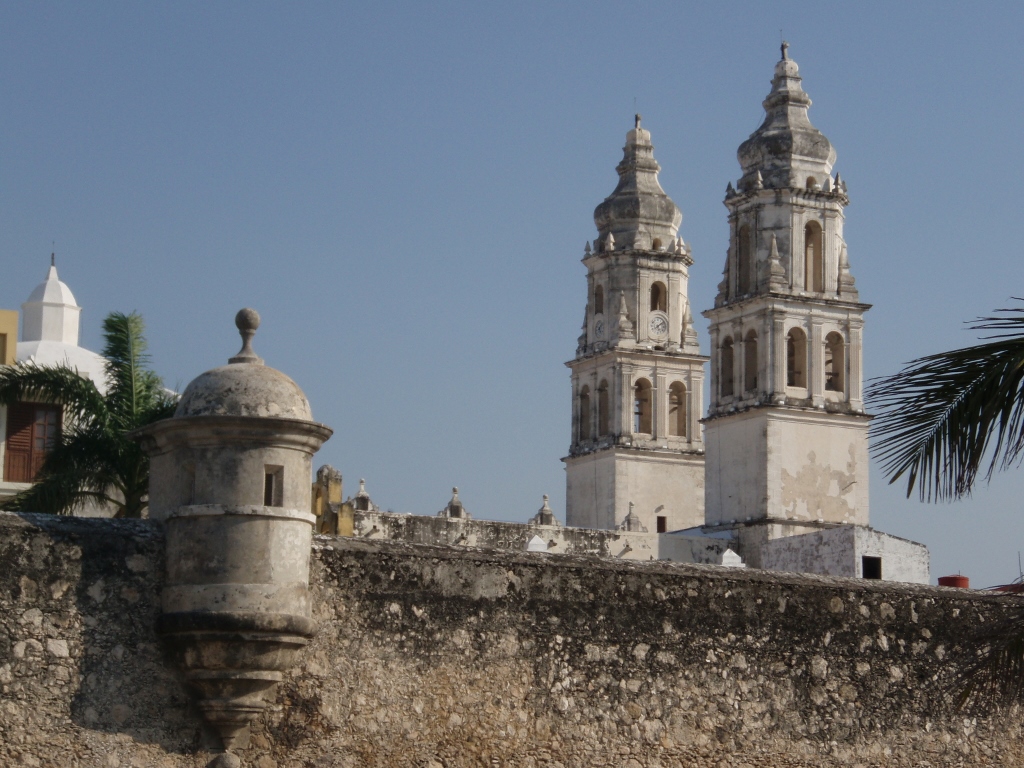 Campeche
Campeche
And then I went round and round in order to get finally to the southeast side of the fortress where there is the Land Gate. In this section it is in fact possible to see a much larger segment of this fortress the construction of which started in 1686 and was finished in 1704 and which was actually the reason why I came to Campeche in the first place. However, I must admit that I was much more impressed by the beautiful houses and churches I saw within the walls. This is likely the result of the fact that I know nothing about military architecture.
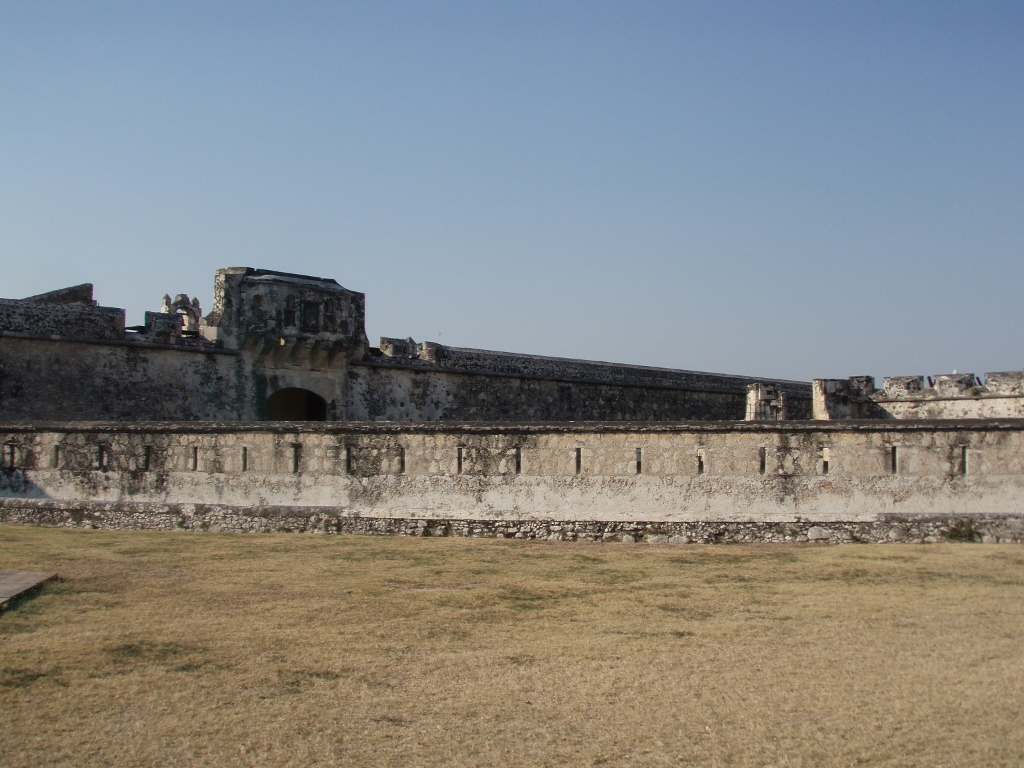 Campeche – Land Gate and the part of the fortress from the south side
Campeche – Land Gate and the part of the fortress from the south side
After this I could finally go to the internet-café where I transferred my photos from the memory cards onto CDs, so my mission for the day was successfully accomplished. By the time I had finished with this, it was already getting dark and I returned towards the main square and my hostel.
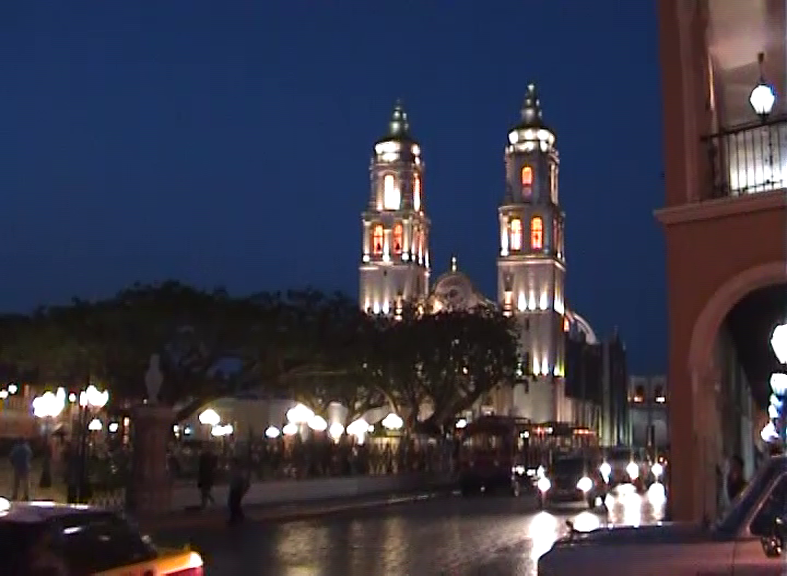 Campeche – the Cathedral and the Independence Square
Campeche – the Cathedral and the Independence Square
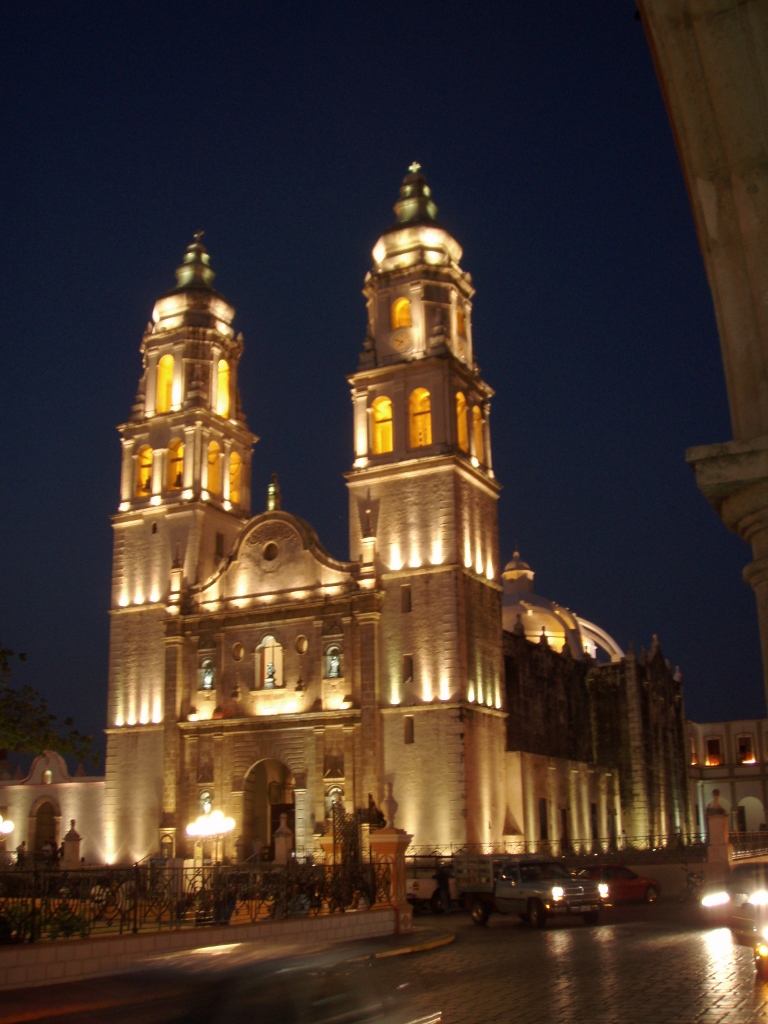 Campeche – the Cathedral
Campeche – the Cathedral